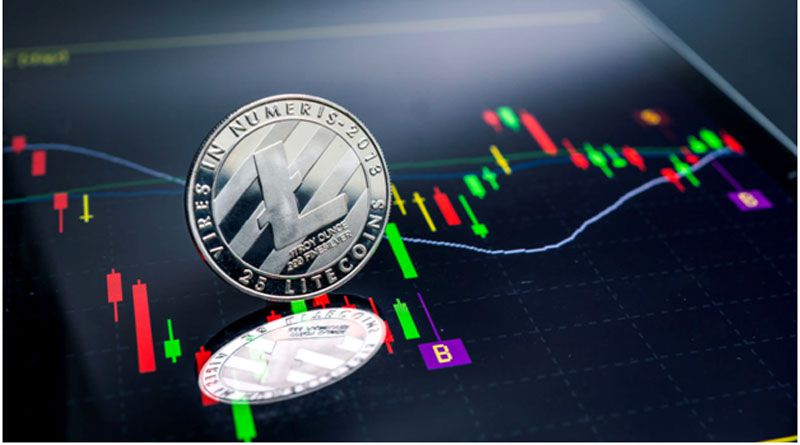Exploring EOS vs DGB
Most investors stick to the most popular crypto tokens when trading, or they combine them with stablecoins. It’s why you often find that investors make conversions like Binance USD to Ethereum. Skilled traders know that the art of success often lies in identifying less-known currencies worth adding to their portfolios.
With that in mind, we focus on exploring EOS and DGB in this article. Keep reading to discover the details about the two currencies.
Technology and Consensus Mechanism
EOS.io only entered the market in 2017, but it also focuses on decentralization and supports smart contracts and dApp creation. The comparison of EOS versus Digibyte isn’t easy, but here are the basics about network technologies and consensus mechanisms.
EOS aims to perform similarly to an actual computer. Its blockchain has three resource types, including CPU (computation), RAM (state storage), and bandwidth. The platform uses a delegated proof-of-stake consensus mechanism. It’s a variation of the classic PoS, where users stake their coins to help confirm transactions and add blocks to the chain. Delegated PoS involves token owners voting on the block producers. A real-time reputation method picks block producers, so it’s simple to vote out any suspicious validators. The small number of delegates (validators) improves the platform’s speed.
Digibyte has a longer history than EOS.io, considering that it was launched in 2013. The idea was to offer a blockchain that supports smart contracts and serves to build decentralized apps and digital assets.
Digibyte uses the proof-of-work consensus mechanism, indicating that it’s possible to mine DGB coins. You can use Skein, Scrypt, Odocrypt, Qubit, and Sha256 algorithms to mine tokens on this chain. After mining a block, miners receive a reward. It’s similar to how Bitcoin works, except Digibyte doesn’t have a halving feature. The total DGB supply is 21 billion, and rewards decrease by 1% each month until all coins are mined.
Speed and Scalability
EOS picks 21 block makers during each voting round in its PoS consensus mechanism process. For a transaction to be confirmed, it’s not necessary for every node to participate. Thanks to that, EOS can finalize over 1,000 transactions per second. For comparison purposes, Ethereum can only process 15, so this is a huge benefit. Low latency and high transaction throughput make EOS great for dApps that need transfers to be completed fast.
It’s best to compare DGB transaction speed to Bitcoin. It takes around ten minutes to process a BTC transaction block. DGB only requires about 15 seconds. It’s also one of the first blockchains that adopted the Segregated Witness feature. SegWit adjusts the transaction format with the idea of improving scalability. Although Digibyte offers fast block times, it doesn’t seem it’s at the same level of scalability as EOS.
Use Cases
EOS is an Ethereum competitor that supports smart contracts. It allows the building of decentralized apps, and its ecosystem is rich with various dApps. That includes decentralized finance (DeFi) apps like AtomicHub, as well as utility solutions like Antelope Tools. The ecosystem also supports gaming and social apps, with some examples including MotoDex, Dungeon Master, and New Chat.
Digibyte doesn’t put emphasis on smart contracts, and its primary use case is different. It’s a digital currency you can use on a daily level. If an internet platform supports DGB, you can use it as a fast payment method to finalize the transaction.
Security
Security is among the top priorities for both EOS and DGB networks. Digibyte has a multi-algorithm setup for added security, which aims to stop hash power fluctuation and mining centralization. EOS has a detailed permission system, which means that developers can design various authorization structures depending on the desired application.
It’s worth noting that DGB and EOS haven’t had any big security problems so far. Those stellar track records boost their reputations. However, no crypto network is bulletproof to security issues. That’s why using common practices for asset and wallet security is still recommended.
EOS vs DGB: Best Investment Choice
EOS and Digibyte are two different crypto networks. The first one aims to compete with Ethereum by offering a tempting ecosystem for dApp creation. DGB, on the other hand, is more of a digital payment method aiming to replace traditional and other virtual currencies.
They can both be good investments, so we suggest analyzing the current market and checking out technical indicators. Finally, don’t forget your intuition and what you believe to fit your portfolio better. Once you pick, we recommend going with a decentralized exchange that guarantees fast and anonymous transactions.

Namaste UI collaborates closely with clients to develop tailored guest posting strategies that align with their unique goals and target audiences. Their commitment to delivering high-quality, niche-specific content ensures that each guest post not only meets but exceeds the expectations of both clients and the hosting platforms. Connect with us on social media for the latest updates on guest posting trends, outreach strategies, and digital marketing tips. For any types of guest posting services, contact us on info[at]namasteui.com.

